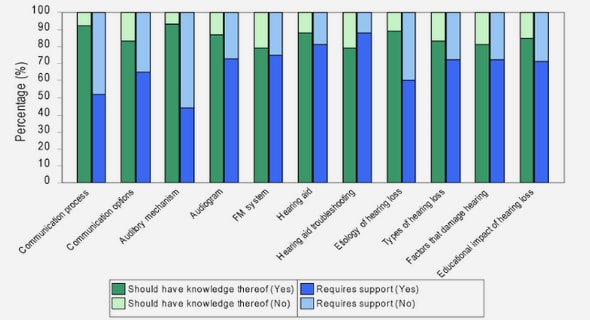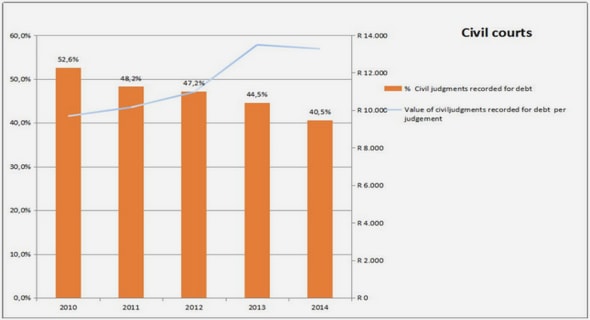Get Complete Project Material File(s) Now! »
Coalescence of droplet (bubble)
Coalescence is a daily phenomenon familiar to everybody and is related to many fields from biology to astronomy and also related to a variety of practical problems in industry. Up to now, numerous investigations have been devoted to droplet (bubble) coalescence inside or outside the realm of microfluidics [96-103]. The film drainage theory is one of the most widely accepted theories for coalescence. According to this theory, the coalescence process could be divided into three stages: ( ) the colliding of bubbles, besieging a small amount of continuous phase between two bubbles; ( ) the thinning of film, continuous phase draining out to a critical value; ( ) the rupture of film, the film collapsing and resulting in coalescence [104]. Currently, researcher put emphasis on two hotspots: (1) how to give rise to contact and collision, (2) what is the predominant force controlling the evolution of the liquid bridge.
For the first hotspot, it is the premise of coalescence. The collision between droplets is usually caused by their relative velocity. The relative motion may occur due to a variety of mechanisms. In unbound flow, at least five sources can be distinguished in a turbulent flow: (1) motion induced by turbulent fluctuations in the surrounding continuous phase; (ii) motion induced by mean-velocity gradients in the flow; (iii) different bubble rise velocities induced by buoyancy or body forces; (iv) bubble capture in an eddy; (v) wake interactions or helical/zigzag trajectories[104]. In the realm of microfluidics, the state of flow maintains in laminar flow as mentioned before. Therefore the most common method is to induce collision by designing a special geometry.
The most direct approach is to utilize the convergence geometry. The droplets flow in the microchannel subjected to fierce confinement; the trajectory of the droplet can be predicted. Thus, as long as there is superposition between two trajectories, the droplets will collide. Wang et al. used a cross-shaped microchannel junction designed to realize head-on microdroplet coalescence without strict control of droplet synchronism as shown in Fig.1.10 [101]. They examined the flow characters of contacting microdroplets≈ in confined microchannels and found a critical capillary number (Ca 0.005) for the occurrence of coalescence.
Micro machining and Wettability of PMMA
The devices used in chaptersμ 3 to 6 contain channels with sub-millimeter dimensions (width =height = 400 m). We fabricated those devices by milling the channels in a flat plate of poly (methyl methacrylate) (PMMA). PMMA is a rigid thermoplastic that is optically transparent. The microchannel was fabricated by milling cutter with high precision in one slide of PMMA. We sealed our PMMA channels to a cover slide of the same material by bolt.
Wettability of PMMA
In multiphase microfluidics, the wetting properties of fluids and channel walls dominate the flow pattern. In our work, we were interested in a well-defined system with the liquid fully wetting the channel walls. This was achieved by choosing the proper combination of materials and fluids. PMMA is the materials we used to fabricate our devices. The polymer is low-energy materials with a surface free energy of = 41 mN/m. Generally, liquids cannot fully wet low-energy surfaces. For instance, water° partially wets the surface of PMMA,° with an equilibrium contact angle of θ c = 72. With a contact angle less than 90 PMMA is regarded as a hydrophilic material.
For PMMA, the critical surface tension is = 40 mN/m. A liquid with surface tension inferior to 40 mN/m will fully wets a surface and partially wets a surface when the surface tension is superior to 40 mN/m. Sometimes the surfactants were used to change the surface tension, thereby producing direct emulsion (oil phase in aqueous phase) or invers emulsion (aqueous phase in oil phase) in the same micro-device.
PMMA Microchannels
Four microfluidic devices were used in this thesis. Fig. 2.1 shows the layout of the devices. All these four microchannels contain a flow-focusing geometry to form droplet (bubble). The continuous phase was guided into two equal lateral branches with the same flow rate Qc/2, the dispersed phase was introduced from the main channel at a flow rate of Qd . These three flow streams focused at the intersection downstream to generate discrete droplet or bubble. Then according to different research objectives, the new formed droplet or bubble will flows downstream passing some given geometries, such as symmetric loop (Fig2.1 b,c), snakelike microchannel (Fig2.1c), straight channel (Fig2.1d) etc. In a symmetric loop (Fig2.1 b,c), the microchannel divides into two symmetric parts at the first T-junction, and then the two channels reconvert to a single channel again at the second T-junction. By this geometry, the breakup of droplets (bubbles) could be studied at the T-junction divergence; while at the T-junction convergence, the responses of droplets (bubbles) collision could be studied. The snakelike microchannel (Fig2.1c) is mainly utilized to added local resistance which could damp the changes in pressure caused by droplets (bubbles) flowing through the loop to ensure that the process of bubble generating would not be interrupted. The straight channel (Fig2.1d) is used to studied the evolution of the morphological shape of the droplets flowing in the microchannel.
Experimental for ferrodroplet coalescence in the ambient air
The experimental setup is shown in Fig .2.3. A vertical stainless steel needle external diameter = 0.98mm plated with Teflon was connected to an independent syringe (5 mL, Hamilton, Germany) driven by syringe pumps (Harvard Apparatus, USA) to form ferrofluid droplets. The tip of the needle was placed above the center of a neodymium iron boron (NdFeB) round magnet (with diameter of 60 mm, Supermagnete, France). A liquid bath of square section (7×7 mm) with a depth of 5 mm filled up with the same ferrofluid was placed between the needle and the magnet. The center of magnet, the tip of needle and the ferrofluid cusp were coaxial by adjusting the platforms. The distance between needle tip and ferrofluid cusp as show in Fig.2.3 was constant D = 1.80 ± 0.04 mm and the flow rate set as a constant Qc = 1.5 μL/min. In our experiments, oil-based ferrofluid (Supermagnete, France) was used with an average diameter of magnetic particles 10 nm, the magneto-viscous effect could be negligible. The whole processes were recorded at 30 008 frames per second with the Phantom V711 camera.
Physical properties of materials used in the experiments
The surface tension σ was measured using a tensiometer, by the pendant drop technique on a Tracker apparatus (Dataphysics, Gemany). The viscosity of the fluids was measured by capillary viscosimetry (TA instrument, NewCastle DE, USA). The density of the liquid phase ρ was measured using a vibrating tuber density meter (Anton Paar DMA-4500-M, Austria). The surface tensions of ferrofluids in different ambient were measured in our laboratory, while other physical properties of ferrofluids are observed from the fabricators (oil-based ferrofluid, Supermagnete, France; water-based ferrofluid, Ferrotech, Germany). The particles volume concentration of water-based ferrofluid was 1.8% and the initial susceptibility χ = 0.39. In our experiments, the two kinds ferrofluid were used with an average diameter of magnetic particles 10 nm, the magneto-viscous effect could be negligible. In addition, the surfactant Sodium dodecyl sulfate (SDS, Sigma-Aldrich, Germany) and Sorbitanlauric acid ester (Span20, Sigma-Aldrich, Germany) were added in the continuous phase, respectively to stabilize the flow pattern and prevent the coalescence. The various properties of the experimental systems were gathered in following Tables.
Table of contents :
Chapter 1 Literature Review
1.1 Changes due to scaling down
1.1.1 Change of the relative importance of the four forces
1.1.2 Confinement
1.1.3 Specific surface area
1.1.4 Wettability and Surfactants
1.2 Droplet and bubble
1.2.1 Droplet (bubble) formation
1.2.2 Droplet (bubble) breakup
1.2.3 Satellite Droplet formation
1.2.4 Coalescence of droplet (bubble)
1.3 Outline
Chapter 2 Experimental
2.1 Fabrication Methods and Experimental Techniques
2.2 Micro machining and Wettability of PMMA
2.2.1 Precise milling
2.2.2 Wettability of PMMA
2.2.3 PMMA Microchannels
2.3 Experimental Setup
2.3.1 Experimental setup for microsystems
2.3.2 Experimental for ferrodroplet coalescence in the ambient air
2.4 Numerical methods
2.5 Image analysis
2.6 Physical properties of materials used in the experiments
Chapter 3 Water-based ferrofluid droplet formation in a microfluidic flow-focusing device
3.1 Introduction
3.2 Results and discussion
3.2.1 Droplet formation in the dripping regime under three configurations of magnetic fields
3.2.2 Volume of ferrofluid droplet and the formation mechanism
3.3 Conclusions
Chapter 4 Droplet (Bubble) breakup process in a microfluidic T-junction
4.1 Introduction
4.1.1 The breakup of droplet under magnetic field
4.1.2 Asymmetrical breakup of bubble due to feedback
4.2 Results and discussion
4.2.1 Ferrodroplet breakup
4.2.2 Bubble breakup
4.3 Conclusions
Chapter 5 The formation of satellite droplet bubblein different micro-device
5.1 Introduction
5.2 Results and discussion
5.2.1 Formation of satellite droplet due to neck pinch-off
5.2.2 Formation of satellite droplet in T-junction
5.2.3 The total volume of the satellite droplets
5.2.4 The formation of satellite droplet (bubble) due to tip stream
5.3 Conclusions
Chapter 6 Droplet (Bubble) coalescence
6.1 Introduction
6.1.1 Bubble coalescence in microfluidic geometry
6.1.2 The dynamics of droplet coalescence
6.2 Results and discussion
6.2.1 Bubble coalescence in microchannel
6.2.2 Coalescence of ferrodroplet
6.3 Conclusions
Chapter 7 General conclusions and prospects
7.2 Prospects
Nomenclature
References


